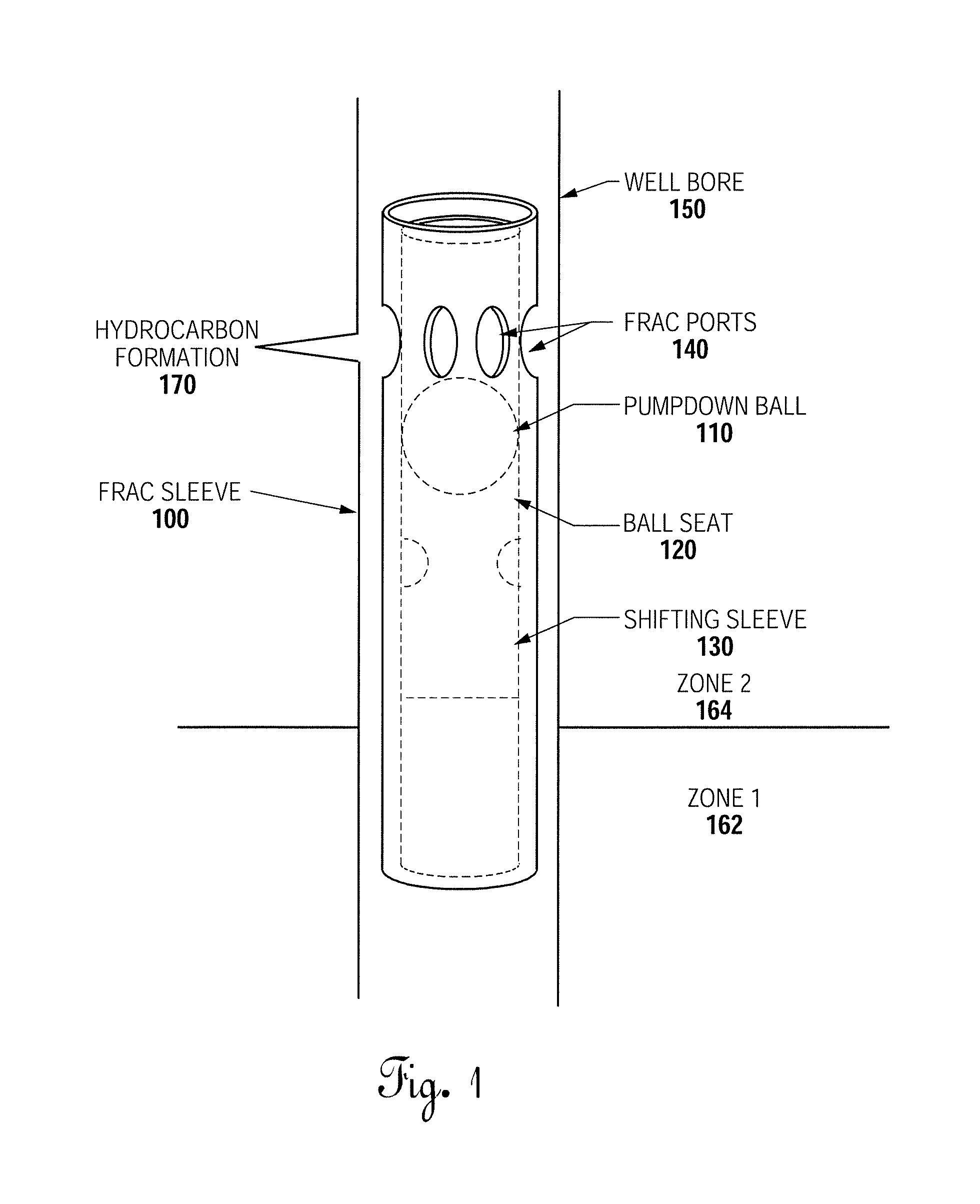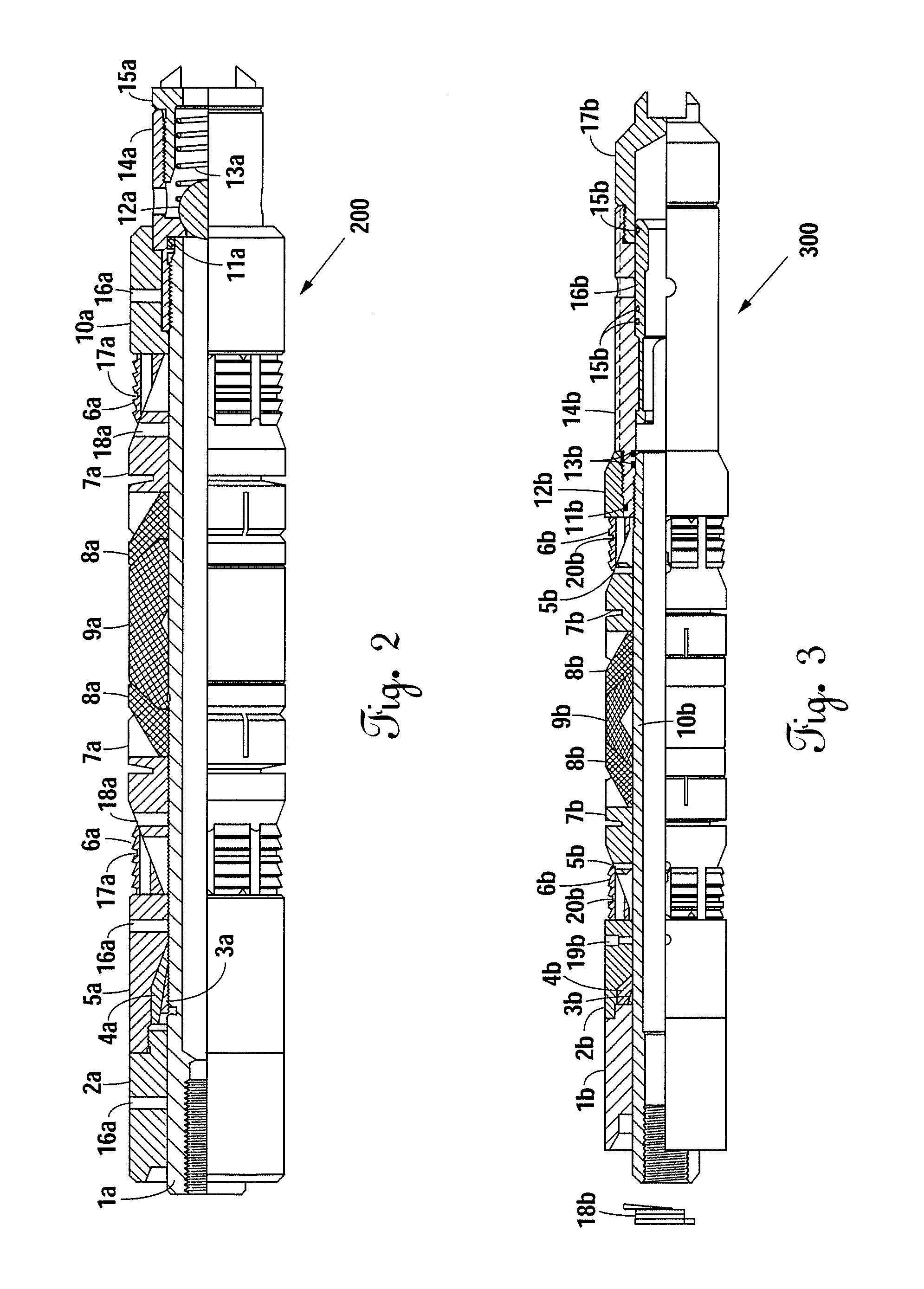Downhole tools having non-toxic degradable elements and methods of using the same
a technology of degradable elements and downhole tools, which is applied in the field of downhole tools, can solve the problems of reducing the use efficiency of downhole tools, so as to achieve non-toxic effects, benefits and functions
- Summary
- Abstract
- Description
- Claims
- Application Information
AI Technical Summary
Benefits of technology
Problems solved by technology
Method used
Image
Examples
example 1
Frac Ball Example 1
[0104]A first test was performed with a 3.375 inch frac ball. Pressurizing was begun. Pressure was increased until, upon reaching 6633 psi, the pressure dropped to around 1000 psi. Continued to increase pressure. The ball passed through the seat at 1401 psi. The 3.375 inch frac ball broke into several pieces after passing through the seat and slamming into the other side of the test apparatus.
example 2
Frac Ball Example 2
[0105]A second test was performed with a 2.125 inch frac ball. Pressurizing was begun. Upon reaching 10,000 psi, that pressure was held for 15 minutes. After the 15 minute hold, pressure was increased to take the frac ball to failure. At 14,189 psi, the pressure dropped to 13,304 psi. Pressure increase continued until the ball passed through the seat at 14,182 psi.
example 3
Frac Ball Example 3
[0106]A third test was performed with a 1.500 inch frac ball. Pressurizing was begun. Upon reaching 10,000 psi, that pressure was held for 15 minutes. After the 15 minute hold, pressure was increased to 14,500 psi and held for 5 minutes. All pressure was then bled off. The test did not take this ball to failure. Removing the ball from the seat took very little effort, it was removed by hand. Close examination of the frac ball revealed barely perceptible indentation where it had been seated on the ball seat.
[0107]In one preferred embodiment, Applicant's PGA ball operates downhole from formation pressure and temperature to fracking pressures up to 15,000 psi and temperatures up to 400° F.
[0108]Frac Ball Pressure Testing Weight Loss
[0109]After pressure testing, two different pieces of the 3⅜ inch frac ball were put into water and heated to try to degrade the pieces. The first piece weighed 140 grams. It was put into 150° F. water. After four days, the first piece wei...
PUM
 Login to View More
Login to View More Abstract
Description
Claims
Application Information
 Login to View More
Login to View More - R&D
- Intellectual Property
- Life Sciences
- Materials
- Tech Scout
- Unparalleled Data Quality
- Higher Quality Content
- 60% Fewer Hallucinations
Browse by: Latest US Patents, China's latest patents, Technical Efficacy Thesaurus, Application Domain, Technology Topic, Popular Technical Reports.
© 2025 PatSnap. All rights reserved.Legal|Privacy policy|Modern Slavery Act Transparency Statement|Sitemap|About US| Contact US: help@patsnap.com



